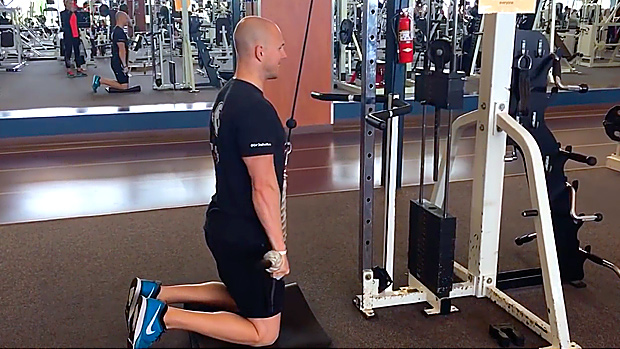Metabolic stress is a critical aspect of muscular hypertrophy. EMOM training accomplishes this while adding a new challenge.
EMOM stands for "every minute on the minute." You do a set of an exercise at the start of every 60-second interval. You rest during whatever time you have left on the clock before the next minute begins.
A few things to know about EMOM training:
- You can use it at the end of a training session to bump up mechanical tension, muscle damage, and metabolic stress.
- You can use it to easily track progress, not just with load, but with reps and work capacity.
- You may enjoy the novelty of it if you're tired of the standard set-and-rep schemes.
- You can adjust it easily for the amount of volume or load you want to use while still keeping metabolic stress intact.
- You'll get aerobic conditioning benefits mainly from local muscle endurance improvement. EMOM work can train you to become more tolerant of acidity in skeletal muscle, thereby improving the clearing abilities of waste products. So, over time, you'll be able to do more work with less onset of local fatigue.
While there are a number of ways you can use EMOM work to challenge yourself, creating metabolic stress is accomplished by doing smaller patterns that involve higher rates of local fatigue.
For example, compare the push-up to a movement like a thruster (a front squat into an overhead press). There's less overall musculature worked in the push-up, which may sound like a bad thing, but stay with me.
The spike in heart rate will be comparatively lower, which can allow you to focus on local muscle endurance, NOT on your ability to manage your heart rate between sets. You won't be gasping for air between sets of push-ups as much as you would between sets of thrusters.
Long story short, exercise selection is the most important aspect of the EMOM equation. The wrong exercise will put you over the edge before the actual work begins.
Try this at the end of your upper-body workout. Do an inverted row variation, then go directly into push-ups.
Every 60 seconds, perform:
- 10 Inverted Rows
- 10 Push-Ups
You'll accumulate roughly 25-30 seconds of total work if you're able to do all of this without stopping. That'll give you 30-35 seconds of rest before the top of the next minute.
Repeat this sequence for as many rounds as you can, but once you've reached 10 rounds, stop.
This equates to 100 reps per exercise. Not something to scoff at. Now, if you're unable to make it 10 rounds, no worries. Make a note of where you ended and retest in 4 weeks.
If you're on the other end of the spectrum and this sequence was easy for you, add difficulty by changing the angle of your inverted row and adding instability to your push-ups.
Inverted Row & Push-Up on Dumbbells
TRX Row With Rotation & Push-Up on Kettlebells
The harder version above isn't necessarily better. You'll likely find that you hit the point of failure much sooner. But remember, failure isn't the goal; accumulating volume is the goal.
Because of the pull/push nature, there's built-in rest, so you may be surprised how much work you're actually able to do.
Remember, your ability to sustain yourself across multiple sets (4-plus) is key. Keep it simple, and don't try to add too much complexity. This can make performing the prescribed work within the 60-second window unreasonable.
For instance, doing EMOM sets for lower-body training presents a different challenge altogether. In that case, I'd recommend only doing one exercise since the musculature you're working is larger. This will spike the heart rate considerably higher.
Here's an example:
EMOM Heavy Russian Kettlebell Swing
Do 15 reps every minute for 5-10 sets. That means this will take 5-10 minutes, and you'll accumulate 75 to 150 reps. Add volume over the course of 4-6 weeks.
EMOMs are an incredibly effective tool for pump work that will help you see improvements with your conditioning too.
Remember, you should be able to be consistent across multiple sets. So if you're dying after two rounds, the load or amount of reps you're aiming for is just too much. You need to feel adequately challenged from every set yet adequately recovered to do it all over again.
The small bouts of rest (30-35 seconds) should be enough for you to keep going for 5-plus rounds. If not, be more conservative the next time around.




